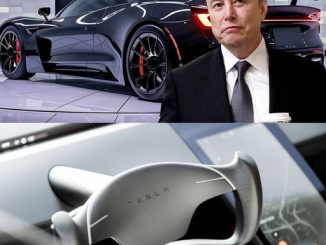
In the world of space exploration, few goals are more elusive—or more ambitious—than full and rapid reusability. Yet for Elon Musk, the driving force behind SpaceX, it’s not just a dream—it’s “the holy grail of rocketry.”
With the Starship program, Musk is betting everything on a concept that could change how humanity accesses space. It’s not just about reaching orbit. It’s about returning, refueling, and relaunching—as easily as a commercial jetliner.
“With Starship, we are aiming for full and rapid reusability. It’s the holy grail of rocketry,” Musk declared, summarizing a decade-long pursuit that could define the future of space travel.
🚀 The Starship Vision
Starship isn’t just another rocket—it’s a two-stage, stainless steel monster, standing 120 meters tall and capable of carrying over 100 metric tons of cargo. Designed for everything from Earth-to-Earth travel to lunar landings and eventual Mars colonization, Starship is SpaceX’s all-in-one vehicle.
But what sets it apart isn’t just its size or payload—it’s Musk’s insistence that every single component should be reused within hours or days, not months.
Traditional rockets are disposable. They burn billions and then vanish into the ocean. But Starship is being built to land, refuel, and fly again—on the same day. That’s the game-changer.
🔄 Reusability: From Dream to Reality
SpaceX already proved the skeptics wrong once with the Falcon 9, the first orbital-class rocket to successfully land and relaunch its first stage multiple times. But Starship takes that idea further—both stages are meant to return and be reused.
- The Super Heavy booster, which lifts Starship into space, is designed to land back on Earth using grid fins and thrusters.
- The upper Starship vehicle, which continues into orbit or deep space, is also meant to return and land vertically—on Earth, the Moon, or Mars.
“Think of it like a 747 that flies to another continent and comes right back,” Musk said. “If you had to throw away a plane after every flight, no one would be able to afford flying.”
🔧 The Engineering Hurdles
Of course, pulling this off is far from easy.
SpaceX engineers face monumental challenges:
- Withstanding multiple launch and re-entry cycles without damage.
- Developing heat shields that can survive Mars return speeds.
- Building launch towers (like the “Mechazilla”) that catch rockets mid-air to minimize wear and tear.
- And achieving all this at low cost, without sacrificing safety.
The key, according to Musk, is iteration and scale. SpaceX is building and testing Starships at breakneck speed at its Starbase facility in Boca Chica, Texas. Failures are expected. Explosions are common. But every test brings improvements.
🌍 Earth Today, Mars Tomorrow
While most space agencies dream of making orbit, Musk is dreaming decades ahead. Starship isn’t just for satellites or astronauts. It’s a foundation for an interplanetary future.
His vision is bold:
- Daily launches from Earth to orbit.
- Orbital refueling using other Starships as tankers.
- Massive cargo runs to the Moon and Mars.
- Building a self-sustaining city on Mars—with Starship as the shuttle.
Musk believes Starship must be reusable not just for cost, but for survival. “If we’re serious about becoming a multiplanetary species,” he says, “we have to make space travel affordable, frequent, and reliable.”
💰 Economic and Global Impact
If Musk’s plan works, it won’t just reshape science fiction—it’ll disrupt the economics of space.
A fully reusable Starship could reduce launch costs from hundreds of millions to mere millions per flight. That could:
- Supercharge the satellite economy.
- Enable space-based manufacturing.
- Make space tourism a reality.
- And give rise to private space stations and lunar outposts.
Governments and competitors are already taking note. NASA has tapped Starship for its Artemis moon missions. Blue Origin and China’s CNSA are racing to match the reusability dream. But SpaceX has the head start.
🌌 A Holy Grail Within Reach?
Musk is the first to admit it’s a monumental task. “This isn’t easy,” he tweeted recently. “But nothing worth doing ever is.”
Despite setbacks—from engine failures to regulatory red tape—SpaceX continues to iterate, test, and fly, often in full view of the public. Each fiery landing or dramatic explosion is a step closer to the ultimate goal.
The holy grail of rocketry—full and rapid reusability—once seemed impossible. But with Starship roaring to life, it might soon be reality.
And if Musk succeeds, he won’t just change the way we get to space. He’ll change what we do once we’re there.


